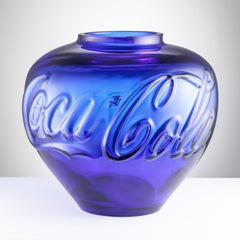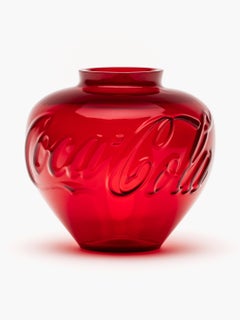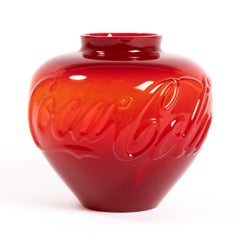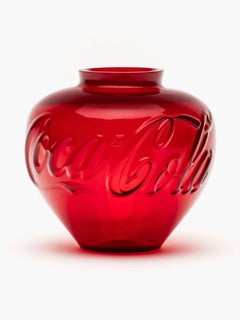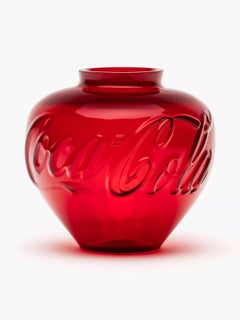Ai Weiwei Coca
21st Century and Contemporary Pop Art Figurative Sculptures
Glass
2010s Figurative Sculptures
Glass
21st Century and Contemporary Pop Art Figurative Sculptures
Glass
2010s Contemporary Figurative Sculptures
Paper
2010s Pop Art Sculptures
Glass
Recent Sales
2010s Figurative Sculptures
Glass
People Also Browsed
Vintage 1970s Italian Mid-Century Modern Stools
Faux Leather, Acrylic, Foam, Plywood
21st Century and Contemporary Italian Modern Sofas
Wool, Cotton
Early 20th Century Arts and Crafts Benches
Oak
2010s European Decorative Dishes and Vide-Poche
Marble
Vintage 1930s Italian Console Tables
Bentwood
Antique 19th Century French Folk Art Decorative Baskets
Straw
20th Century Moroccan Mid-Century Modern Decorative Boxes
Wood, Fruitwood, Walnut
20th Century American Mid-Century Modern Chairs
Faux Leather, Plastic
21st Century and Contemporary American Sofas
Linen, Velvet
Vintage 1940s American Colonial Revival Trunks and Luggage
Brass
Vintage 1970s Mid-Century Modern Coffee and Cocktail Tables
Travertine
2010s American Mid-Century Modern Pillows and Throws
Fabric, Down, Feathers
Mid-20th Century French Mid-Century Modern Decorative Boxes
Bronze
Vintage 1970s Danish Mid-Century Modern Bookcases
Steel, Chrome
2010s Afghan Modern Central Asian Rugs
Wool
2010s Finnish Modern Lounge Chairs
Fiberglass
Ai Weiwei for sale on 1stDibs
Ai Weiwei was born in northwest China but was sent to a labor camp in Beidahuang, Heilongjiang, when he was only a year old. There he was raised for the early years of his life. His father Aì Qīng’s involvement in the Anti-Rightist Movement led to the family's exile shortly afterward to Shihezi, Xinjiang, where Ai spent the duration of his childhood. Upon Mao Zedong’s death, the family returned to Beijing in 1976.
Following the family’s return home, Ai enrolled in the Beijing Film Academy to study animation in 1978. He was one of the founders of the avant-garde art group the Stars alongside contemporaries Ma Desheng, Wang Keping, Mao Lizi, Huang Rui, Li Shuang, Ah Cheng and Qu Leilei. The Stars disbanded in the 1980s, but Ai participated in regular shows that recalled the ten years that the group had been together, including at the Hanart Gallery in 1989 and the retrospective 2007 exhibition at Beijing's Origin Point.
Ai moved to the USA in 1981, among the earliest of students to study abroad following China’s reform in 1980, which afforded him the opportunity to take the TOEFL in 1981. He lived in Philadelphia and then in San Francisco, studying English at the University of California, Berkeley. Afteward, Ai studied at Parsons School of Design in New York City and attended the Art Students League of New York from 1983 to 1986. He initially made a living by drawing street portraits.
Immersing himself in the Pop art scene, which was rapidly gaining popularity, Ai began creating conceptual art and photography. Ai returned to China after his father became ill in 1993, and while there he helped to establish the experimental art scene called Beijing East Village. In 1999, Ai built a studio house in Beijing — his first architectural project. Ai founded the architecture studio FAKE Design in 2003, and co-curated the art exhibition "Fuck Off" with Feng Boyi in Shanghai.
In 2011, Ai was arrested and jailed. Released after 81 days, the government confiscated his passport. His release was in part due to the uproar of the art world against his charges of tax evasion; the Solomon R. Guggenheim Foundation and the International Council of Museums both organized petitions, collecting almost 100,000 signatures calling for his release. When he reclaimed his passport in 2015, Ai moved to Berlin and lived in a studio. It became a base for him to create his international work.
Ai is the artistic director of China Art Archives & Warehouse. The experimental gallery and archive, co-founded by Ai in 1997, concentrates on experimental art from the People’s Republic of China, initiating and facilitating exhibitions both in China and internationally.
Ai's work is in the collections of museums worldwide, including the Tate, London; Arken, London; Brooklyn Museum, New York; and the RA, London. His international architectural collaborations, including the Beijing National Stadium and the Serpentine Gallery Pavilion, have consistently been met with critical acclaim.
Find a variety of authentic Ai Weiwei prints, paintings and other art today on 1stDibs.
Finding the Right Figurative-sculptures for You
Figurative sculptures mix reality and imagination, with the most common muse being the human body. Animals are also inspirations for these sculptures, along with forms found in nature.
While figurative sculpture dates back over 35,000 years, the term came into popularity in the 20th century to distinguish it from abstract art. It was aligned with the Expressionist movement in that many of its artists portrayed reality but in a nonnaturalistic and emotional way. In the 1940s, Alberto Giacometti — a Swiss-born artist who was interested in African art, Cubism and Surrealism — created now-iconic representational sculptures of the human figure, and after World War II, figurative sculpture as a movement continued to flourish in Europe.
Lucian Freud and Francis Bacon were some of the leading figurative artists during this period. Artists like Jeff Koons and Maurizio Cattelan propelled the evolution of figurative sculpture into the 21st century.
Figurative sculptures can be whimsical, uncanny and beautiful. Their materials range from stone and wood to metal and delicate ceramics. Even in smaller sizes, the sculptures make bold statements. A bronze sculpture by Salvador Dalí enhances a room; a statuesque bull by Jacques Owczarek depicts strength with its broad chest while its thin legs speak of fragility. Figurative sculptures allow viewers to see what is possible when life is reimagined.
Browse 1stDibs for an extensive collection of figurative sculptures and find the next addition to your collection.
